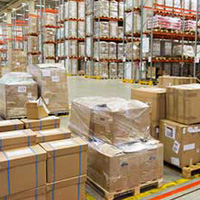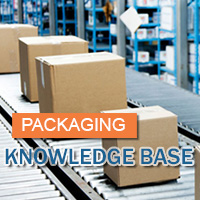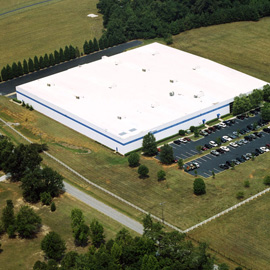What you need to know about load containment
What exactly is "load containment" anyhow?
Load containment allows a load to be securely held in place so that it can safely arrive intact at it's desired destination.
In order to obtain the maximum load containment, you should have an understanding of the types of loads, and containment factors.
Unitized Load Types: Profile Loads
The type of unitized load refers to the items that are being shipped. This meansthat the type of product plus the orientation of that product directly affects the ability of the load to be contained.
A-Profile Loads: Unitized loads that are uniform in shape and have no protrusions
- load perimeter closely matches the pallet perimeter
- easiest to wrap & contain
- may be composed of like-similar products

B-Profile Loads: Loads with puncture hazards fewer than 3 inches.
- less uniform than the A-profile loads, irregular stacking pattern
- generally exist in smaller manufacturing and distribution warehouses
C-Profile Loads: loads with puncture hazards over 3 inches
- difficult to contain.
- contains mixed products
- often assembled at distribution centers for retail store locations
What to understand about the ability to contain loads
- Load perimeter - the length and/or width can affect the ease of containment. The larger the width x height, the easier it will be to contain the load.
- Load height - Height can either increase or decrease the ease of containment, depending on the weight and perimeter of the load.
What about wrapping patterns?
Wrap patterns refer to where you are placing the film on the load. Most often, stretch wrapping begins at the bottom of the load, and works its way to the top of the load, slightly overlapping each wrap. Once the top layers are in place, the stretch wrapper will spiral wrap the load until it reaches the bottom.
What to know about Film Force to Load
Film force to load is tension created due to the stretch film's attempt to return to its original state after being stretched. Film force to load is produced by creating tension between the load and the film carriage.
Film force to load can be accomplished by reducing the film feed,or by mechanically delaying the dance bar arm, which reduces the film feed leaving the carriage.
How many stretch film layers do I need?
Applying morestretch film layers to the top and bottom of a load can provide better load containment. Each additional pallet wrap layer increases the overall film force, also known as the "benefit per layer."
Film overlap is absolutely necessary to increase the strength of the bonding of each layer of stretch film in the center of the load.
How does speed affect the wrapping configuration?
Speeds can be adjusted on both the turntable as well as the carriage. So if you're using a turntable stretch equipment, the rotationspeeds can range from 1-16 revolutions per minute. While by increasing the speed of the stretch wrapping process you can decrease your total wrap time, be careful when doing so. Increasing the speed of the wrapping process can simultaneously cause the centripetal force to increase, and result in yourload falling over.
Distribution Environment: Why is all of this important to know?
The distribution environment refers to the changing and unchanging stresses that a unitized load endures both when warehoused and in transit. Load containment can be tested and evaluated based on gaining insight into the type of shipping it endures as well as the intensity of any hazards that it will face.
Think about it this way. If you are shipping a full truckload of product, you know exactly how much space you'll be using, how much product you'll be able to put into the trailer, and (probably most importantly) how much void space there will be between product. It makes sense thatthere would bea decreased amount of space for the product to move about during transit. On the other hand, if you think about less than truckload shipments, now you have your product in a trailer with an undetermined amount of space to move about in and may be handled multiple times by different people at different stops.
In order to ensure tightly contained loads, you'll want to take these three things away from this post.
- Film force generally will be higher on the top and bottom of the loads, rather than the middle of the load.
- You can wrap your loads with the highest possible pre-stretch available, and not lose any strength of the load.
- By using a high pre-stretch film, you will decrease the amount of stretch wrap that you use, while also decreasing your stretch wrap costs.







